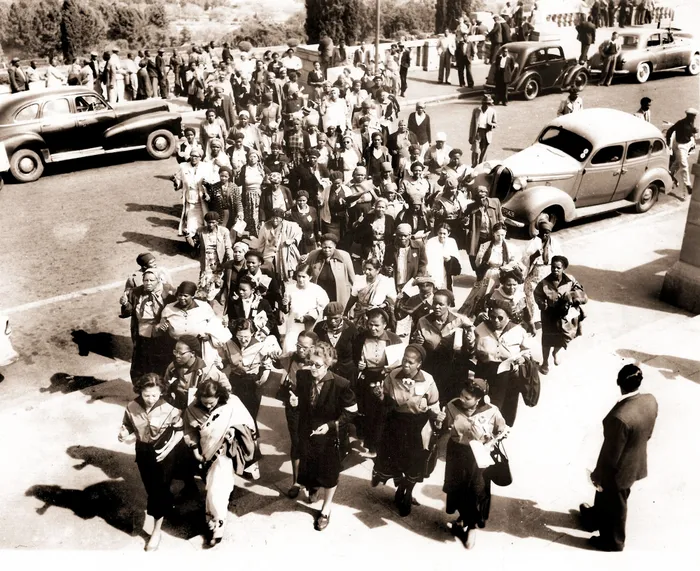Women’s Day in SA, but how much do we really have to celebrate?

What is there celebrate, except to honour the bravery of the women who, on August 9 in 1956, stood up against oppression and defied the laws of the apartheid government, says the writer.
Ubanesia Adams
We are observing another Women’s Day on Wednesday. I do not want to sound pessimistic, but I am wondering what there is to celebrate, except to honour the bravery of the women who, on August 9 in 1956, stood up against oppression and defied the laws of the apartheid government.
In celebration of this year’s Women’s Day and Women’s Month, I chose to reflect on what has become of this gender equality promotion (women’s empowerment) project, to which national and international commitments were made and for which constitutional obligations exist.
In a recent book, Feminist Institutionalism in South Africa: Designing for Gender Equality, edited by my colleague Amanda Gouws, I wrote a chapter in which I considered what gender inequality means when one looks at the work done by the national department responsible for the promotion of gender equality in South Africa.
I noticed a trend comprising structural, leadership and focus changes at a national level since 2009. These changes introduced different meanings to the task of addressing gender inequality.
The structural changes resulted from presidential decisions, which started with former President Zuma creating the Department of Women, Children and Persons with Disabilities, and later changing this department to the Department of Women. His successor President Cyril Ramaphosa changed the focus of the department in 2019 to include women, youth and persons with disabilities.
Giving effect to structural changes means, amongst others, moving functions and redoing strategic plans to reflect new priorities or remove old priorities. This has human resource and budgetary implications. When considering this ‘policy work’, to use the concept that Hal Colebatch explores, addressing gender inequality seems largely about implementing departmental reconstruction and developing ways to ensure compliance with policy expectations of other governmental structures such as compliance requirements from the National Treasury.
The effort required to implement these structural changes (what seemed to be every five years, and after an election) may create the impression that the department’s work has, in practice, primarily not focused on the promotion of gender equality.
We have an upcoming election in 2024 and five years have passed since the president created the latest version of this department.
I wonder whether we should expect another structural change to this component of the gender machinery. If the department changes again, it will once again set in motion ‘policy work’ that seeks to ensure compliance with governmental requirements first. The key question is: What will happen to the gender equality promotion project in the interim?
To be fair, the department (in its different variations) has done work to address gender inequality challenges that women face. These activities are recorded in the annual reports and include engagements with the public around gender-based violence, engagements with other government departments, and active document development.

One example of an activity is the Sanitary Dignity Project, which has been carried over with a departmental change to the Department of Women, Youth and Persons with Disabilities.
Through this project, the government provides women who cannot afford sanitary products with such items. This needs-focused project is important because there are differences amongst South African women when it comes to what we ‘need’.
The Sanitary Dignity Project also addresses the need of young girls who may avoid school when they are menstruating because they cannot afford sanitary products. For other women there may be other ‘needs’, such as facilitating economic opportunities for women-owned businesses (another item that has been on the department’s agenda).
Every year when we celebrate Women’s Day and Women’s Month, we have an opportunity to remember the stubborn bravery of our forebears and to draw courage from their example as we teach the next generation about resisting oppression. Every year we also have an opportunity to reflect on whether the abovementioned department’s (in whatever form it may take in the future) activities truly respond to the variety of ‘needs’ women have.
In particular, does the department’s work actively contribute to creating an environment in which it is much easier for women to claim their rights, in which they can recognise their value as human beings and, as South African citizens, can see pathways to build a hopeful and better future for themselves and their dependants?
I realise that it may not be fair to suggest that one department should rise to this mammoth task. However, if the department’s activities reflect responses to a variety of needs, we may have reason to increase our hope for gender equality promotion in South Africa.
Dr Adams is a lecturer in the Department of Political Science at Stellenbosch University. This article is based, in part, on her chapter in Feminist Institutionalism in South Africa: Designing for Gender Equality (Rowman & Littlefield, 2022).
Cape Times
Related Topics: